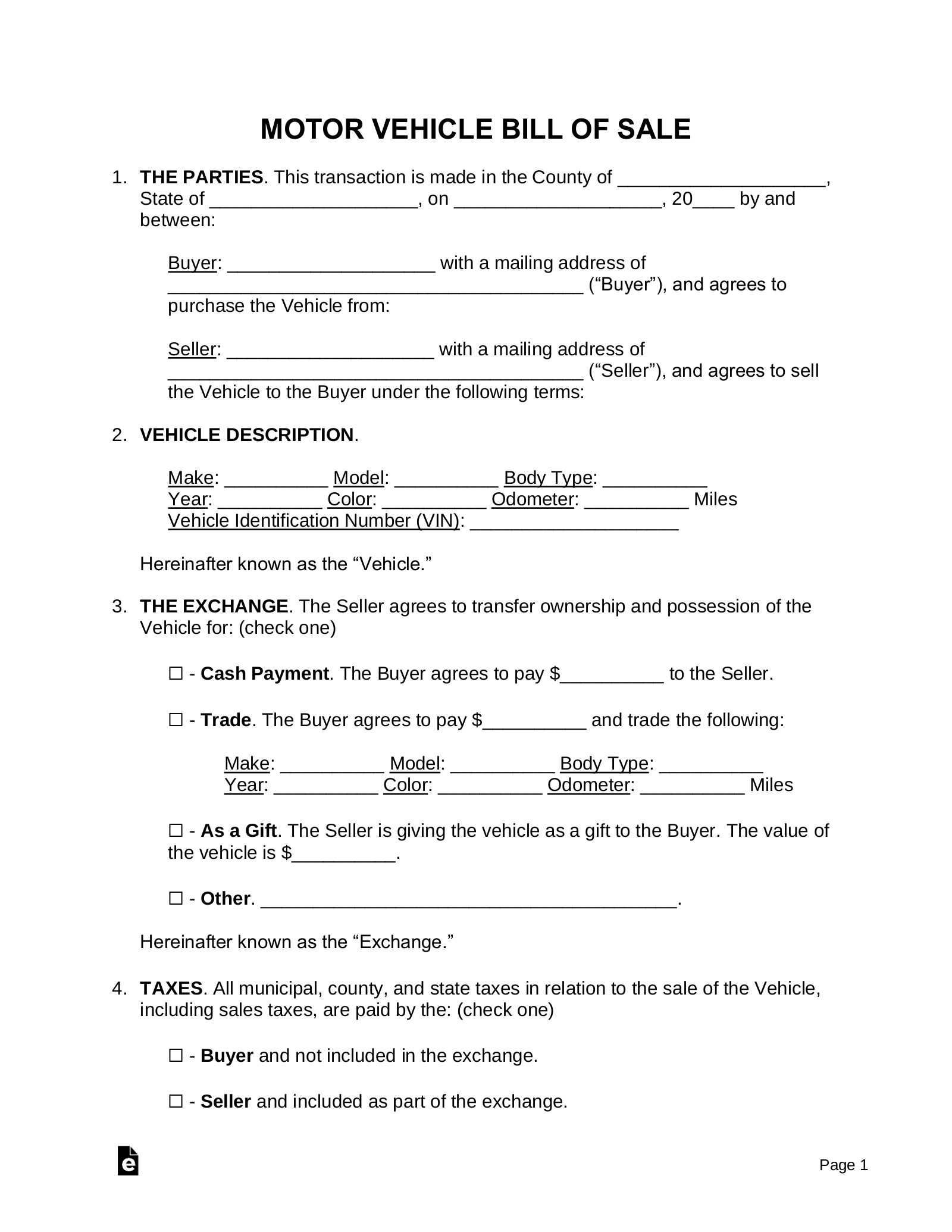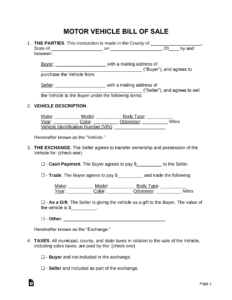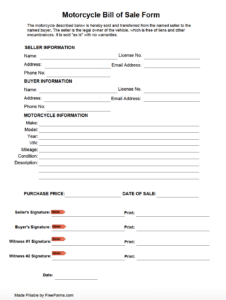So, you’re about to buy or sell a car, truck, motorcycle, or perhaps even an RV? It’s an exciting time, whether you’re upgrading, downsizing, or just changing things up. While much of the focus is usually on the vehicle itself – its condition, mileage, and price – there’s a crucial piece of paperwork that often gets overlooked in the excitement: the bill of sale. This isn’t just a formality; it’s a vital document that protects both the buyer and the seller.
Think of it as your official record, your proof, and your peace of mind all rolled into one simple form. It legally documents the transfer of ownership, confirming that money has exchanged hands for a specific vehicle on a particular date. Without one, you could run into all sorts of headaches down the road. That’s why having a reliable bill of sale motor vehicle template ready to go is such a smart move for any private vehicle transaction.
Why You Absolutely Need a Bill of Sale
When you engage in a private vehicle sale, you’re not just handing over keys for cash; you’re entering into a legal agreement. A bill of sale serves as a concrete record of this transaction, protecting both parties from potential misunderstandings or disputes later on. For the seller, it proves that the vehicle is no longer their responsibility from a specific date and time, potentially shielding them from liability for any incidents that occur after the sale. For the buyer, it establishes undisputed ownership, which is paramount.

Beyond basic legal protection, a bill of sale is typically required for several practical and administrative purposes. Most state Department of Motor Vehicles (DMVs) or equivalent agencies will demand a properly executed bill of sale before they allow you to register the newly acquired vehicle in your name or transfer the title. Without it, you might find yourself in a bureaucratic limbo, unable to legally drive your new purchase.
Furthermore, this document often plays a significant role in tax matters. Many states assess sales tax on vehicle purchases, and the bill of sale provides the official record of the purchase price, which is used to calculate the amount of tax due. It ensures transparency and helps prevent any discrepancies or audits from tax authorities down the line. It’s also crucial if you ever need to prove the date of sale for insurance purposes or to settle any claims related to the vehicle’s condition at the time of transfer.
Consider also the odometer disclosure statement, which is often integrated into or accompanies the bill of sale. This legally binding declaration confirms the mileage of the vehicle at the time of sale. This is essential for protecting the buyer from fraud and for maintaining accurate records of the vehicle’s history. In essence, the bill of sale isn’t just paperwork; it’s a foundational document that underpins the entire private vehicle transaction, ensuring everything is above board and legally sound.
Essential Elements of a Good Bill of Sale
- Full legal names and addresses of both the buyer and the seller.
- Detailed description of the vehicle, including make, model, year, body type, and color.
- The Vehicle Identification Number (VIN) – this is crucial for accurate identification.
- The exact odometer reading at the time of sale.
- The agreed-upon purchase price of the vehicle.
- The date and time of the transaction.
- A statement indicating the vehicle is sold “as is” (if applicable), which means the buyer accepts the vehicle in its current condition with no warranties from the seller.
- Signatures of both the buyer and the seller.
- Space for witness signatures, which can add an extra layer of verification, though not always legally required.
Where to Find and How to Use a Bill of Sale Motor Vehicle Template
In today’s digital age, finding a reliable bill of sale motor vehicle template is easier than ever. You don’t need to be a legal expert or draft something from scratch. Many government DMV websites offer state-specific templates that are legally compliant, and numerous reputable legal or automotive websites provide generic or customizable versions. It’s always a good idea to check your specific state’s requirements, as some states have unique stipulations or preferred formats for these documents.
The primary benefit of using a pre-made bill of sale motor vehicle template is its convenience and the assurance that it covers all the necessary legal bases. Instead of worrying about what information to include, you simply fill in the blanks. These templates are designed to be user-friendly, guiding you through each piece of information required, from the vehicle’s unique VIN to the agreed-upon sale price and the signatures of both parties involved.
Once you’ve selected a template, the process of filling it out is straightforward but requires careful attention to detail. Gather all the necessary information beforehand: the full legal names and addresses of both buyer and seller, the exact details of the vehicle (make, model, year, VIN, license plate number if applicable), and the precise odometer reading. Double-check every entry for accuracy, as any mistakes could cause problems when registering the vehicle or resolving future disputes.
After completing the template, print out at least two copies – one for the buyer and one for the seller. Both parties should sign both copies, ideally in the presence of each other, and if possible, with a witness. This ensures that everyone has an identical, legally binding record of the transaction. It’s also wise to take a clear photo of the signed document with your smartphone for an extra digital backup. Store your copy in a safe place, alongside the vehicle’s title and any other related paperwork.
- Always verify the VIN on the vehicle itself matches the VIN on the title and the bill of sale.
- Ensure the odometer reading is accurately recorded and disclose any known discrepancies (e.g., “not actual mileage”).
- Consider a pre-purchase inspection by a trusted mechanic if you are the buyer; note any agreed-upon conditions in the bill of sale.
- Arrange for payment securely, whether it’s a cashier’s check, bank transfer, or cash, and document the method of payment.
- Remember that the bill of sale is generally for the vehicle itself, while the title formally transfers ownership. Both are crucial.
Ensuring you have a properly executed bill of sale is more than just good practice; it’s a non-negotiable step for any private motor vehicle transaction. It’s a simple document that carries significant legal weight, providing a clear and undeniable record of the transfer of ownership and the terms of the sale. This small effort upfront can save you a world of trouble and uncertainty down the line.
So, as you embark on your next vehicle journey, remember the power of proper documentation. By utilizing a readily available template and taking a few moments to accurately complete it, you’re not just closing a deal; you’re building a solid foundation for a hassle-free and legally sound transition of vehicle ownership. It’s about ensuring peace of mind for everyone involved.



